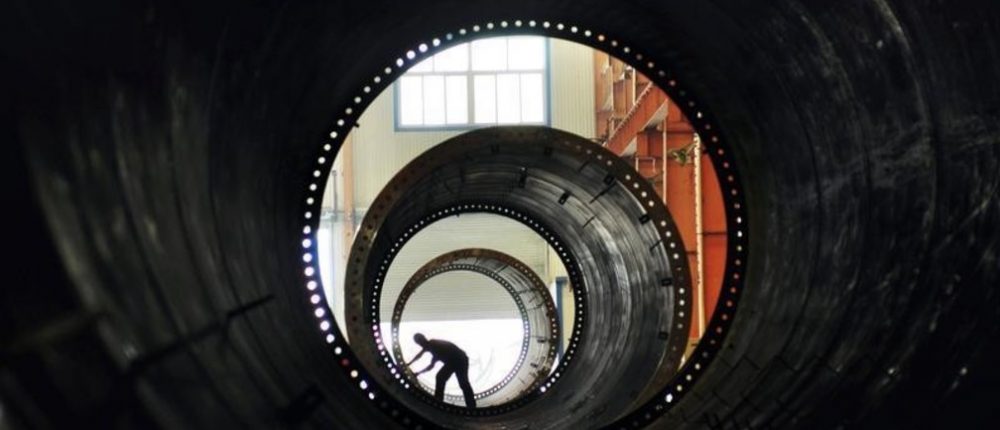Five things leaders can do to create a truly circular economy
[edit] Introduction
As the world continues to grow, so does our environmental footprint. At the G7 Alliance on Resource Efficiency workshop held in Washington, DC in 2017, it was noted that three quarters of all raw materials used in industrialised countries end up in landfills in just one year — that number is staggering and a cause for significant concern.
The circular economy can dramatically alter that trend and create a more sustainable and profitable future. However, there are significant barriers that keep us from achieving this. Below are five things we, as leaders of the fourth industrial revolution, can do to create a true circular economy:
[edit] 1 Realise a circle is not a line
We need a fundamental paradigm shift to leave behind linear thinking and not look at the end-of-life of a product as waste, but rather, a critical source of supply for new products. With a circular economy, a supply chain starts and ends at the same place.
That may sound simple, but it is a radical concept to many. We must shift our perspective and realise there is no end-of-life for a product, just an end of effective use.
[edit] 2 Commit to circular supply chains
To achieve a circular economy, products must be designed with materials that can be economically and responsibly recovered or re-purposed. By thinking about the lifecycle of the raw materials as opposed to the finished product, companies can benefit both financially and socially.
At Johnson Controls, our conventional automotive batteries have been designed so 99% of the materials can be reused. While this may not be possible in all products, this thinking, coupled with a one-for-one product exchange of old product for new, is critical to creating a circular supply chain.
[edit] 3 Enable standardised materials in industries and sectors
Without standardised materials across sectors, a circular system would be limited to only one company or product line. This happened in the 1990s when another battery company introduced non-standard materials into their vehicle batteries. What provided a marginal product improvement caused the entire recycling system to fail since the new product could not be recovered and reused across the sector.
Fortunately, market forces drove out this marginal product improvement to ensure the greater value enabled by the circle. Today, while our products are highly differentiated, they use a standard set of materials allowing us to recycle a competitor’s product in our system.
[edit] 4 Align the circular system with every part of the business
While new products are delivered and sold, they should also be exchanged for used ones. In this type of scenario, a marketing campaign can impact raw material supply through increasing returns. In terms of logistics, a new system must be put in place to manage the flow of new and used materials at the same time.
Additionally, careful planning and execution is needed to ensure recycling facilities are well equipped to supply the manufacturing process.
[edit] 5 Address regulatory constraints
Government regulations developed in the functional silos of a linear paradigm can hinder the ability to close the loop and create a circular economy. Manufacturing and distribution regulations vary from country to country, which makes it difficult to create a scale-able process for end-of-life and recovery of used products.
For example, while the only difference between a new vehicle battery and a used one is that the latter can no longer hold an effective charge, the two products are treated very differently by regulations. Just as the business community must integrate circular thinking, policymakers must also identify and remove regulatory roadblocks.
[edit] Continuing the progress
Our journey to create a closed-loop supply chain at Johnson Controls began when we recycled our first battery in Germany in 1904. Today in the G7 economies, 99% of all used conventional vehicle batteries are responsibly recycled and recovered to create new ones.
In the early 1900s, Henry Ford pioneered vertical integration to supply the growing demand for the Ford Motor Company. As we prepare for the fourth industrial revolution and the consequences that come with it, now is the time for us to pioneer 'circular integration'. It has been and can be done.
This article was originally published on the World Economic Forum Agenda Blog. The views expressed in this article are those of the author alone and not the World Economic Forum.
This article was originally published on the Future of Construction Knowledge Sharing Platform and the WEF Agenda Blog.
[edit] Related articles on Designing Buildings Wiki
- A social, circular economy.
- Blockchains will change construction.
- Building Revolutions - review.
- Circular economy.
- Circular economy in the built environment.
- Circular economy - transforming the worlds number one consumer of raw materials.
- Faraday Challenge.
- Impact of the sharing economy on construction craft labour and equipment markets.
- Managing packaging waste streams.
- Recyclable construction materials.
- The future of electricity in domestic buildings.
- The use of batteries to store electricity for buildings.
- Waste management plan.
--Future of Construction 14:31, 20 Jun 2017 (BST)
About the wiki
Anyone is welcome to use and contribute to the wiki in different ways.
[edit] Engaging with the wiki
You can:
- Contribute to existing articles
- Create articles
- Share articles through social media and other channels
- Contact the CIRCuIT project to let us know what you think and how we can improve
[edit] Add your own content
To contribute to or create an article, you can follow these steps:
- Register as a user
- Read through the editorial policy and guidance on writing and contributing to articles
- See the detailed help page on tips on writing wiki articles
- Try editing a test article
- If editing an article, select 'Edit this article' underneath the article title
- If creating a new article, select 'Create an article'. In the 'Select categories' area, expand the 'Industry context' list and tag 'Circular economy' to add your article to this wiki
[edit] Who is this wiki for?
The articles contain information on implementing circular economy approaches in construction that could be relevant to:
- Architects
- Construction contractors
- Designers
- Developers, owners, investors
- Engineers
- Landowners
- Manufacturers and supplier
- Universities and research
- Urban planners
[edit] About CIRCuIT
The Circular Economy wiki is supported by the Circular Construction in Regenerative Cities (CIRCuIT) project, which is funded by the European Union's Horizon 2020 research and innovation programme. CIRCuIT is a collaborative project involving 31 ambitious partners across the entire built environment chain in Copenhagen, Hamburg, Helsinki Region and Greater London. Through a series of demonstrations, case studies, events and dissemination activities, the project will showcase how circular construction practices can be scaled and replicated across Europe to enable sustainable building in cities and the transition to a circular economy on a wider scale.







